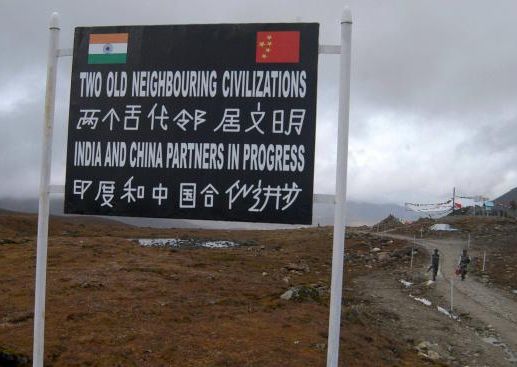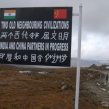
Sino-Indian Border Negotiations: Problems and Prospects
Publication: China Brief Volume: 12 Issue: 6
By:

On March 6, China and India operationalized a coordination agreement to avert conflict along their contested border. The Working Mechanism for Consultation and Coordination on India-China Border Affairs, as the agreement is officially termed, was first broached by Chinese Premier Wen Jiabao during a visit to India in December 2010, and officially formed during the 15th round of border talks between the two sides in New Delhi from January 15 to January 17 this year. After last week’s two-day meeting, Indian External Affairs Minister S.M. Krishna said the mechanism would help in “minimizing” or “bridging” differences between the two countries, while the Chinese Foreign Ministry issued a statement declaring that “positive progress” had been made to safeguard peace and tranquility along the border (Indian Express, March 9; Xinhua, March 6). Deep underlying tensions and rapid buildups of military and infrastructure along the border by both sides however threaten to slow the already glacial progress being made in Sino-Indian border negotiations.
The border dispute centers around two separate pieces of territory: Aksai Chin and what India terms Arunachal Pradesh (or, for China, Southern Tibet). The former is located either in the Indian province of Jammu and Kashmir or the Chinese western province of Xinjiang. The latter was the site of a war between the two sides in 1962 during which India suffered an embarrassing defeat. Ambiguity still remains on other issues, however, such as Sikkim, which India annexed in 1975 and China is said to have tacitly but not officially accepted. These border disputes tend to drag in broader issues as well, such as China’s frustration at India’s harboring of the Dalai Lama and over 130,000 Tibetans as well as forays by one rising power into the other’s backyard. Whether it be China’s alleged string of bases, ports and airfields to encircle India in South Asia or India’s oil and gas exploration in the South China Sea, both powers seem to be exacerbating the insecurities of the other (Xinhua, September 26, 2011).
Although China and India have been engaged in talks on the border dispute since the 1980s, confidence-building measures only began to take off in the 1990s. The two sides concluded two agreements in 1993 and 1996 that acknowledged the line of actual control (LAC) between them and set out basic principles for the building of mutual trust in addition to some efforts to stabilize the border. More recently, agreements have been reached to expand the border trade and to seek a political settlement of the boundary issue through negotiations. Following the operationalization of the working mechanism this March, boundary talks appear to be in the second stage of a three step process involving agreements on principles, the drafting of a framework and an eventual consensus on a boundary line (Indian Express, January 16).
The recent diplomatic breakthrough in Sino-Indian border negotiations however masks the deep mistrust that continues to exist between Beijing and New Delhi. Recent attempts to strengthen defense ties have been stifled by protests and cancelations by both sides related to lingering border disputes. There were some hopes for an improvement a few years ago, when two rounds of joint military exercises were held in 2007 and 2008, and three rounds of the India-China Annual Defense Dialogue (ADD) were held beginning in 2008. The ADD began to evolve from exploratory dialogues to addressing boundary questions and other controversial claims (People’s Daily, January 7, 2010). When Beijing in August 2010 however denied Indian Northern Commander Lt. Gen B.S. Jaswal entry into China for an official trip (the Northern Command is responsible for sensitive border areas like Jammu, Kashmir and Ladakh), New Delhi suspended defense exchanges with Beijing, refused to hold the third round of joint military exercises, code-named “Hand in Hand,” and retaliated by obstructing the visit of three Chinese officers to India that month (The Hindu, August 27, 2010).
A brief thaw appeared to occur last year after Indian Prime Minister Manmohan Singh visited China in April. India sent a military delegation to China in June, Beijing reciprocated by sending a delegation in November, and the two sides held the forth round of the ADD in December. Defense ties however have hit a rocky road again in the past few months as the border negotiations took place. In November 2011, China called off the 15th round of border talks between the two sides, because it objected to the Dalai Lama speaking at an international Buddhist conference in New Delhi at around the same time (Indian Express, December 20, 2011). The talks were subsequently rescheduled for January. Then, in January this year, China denied a visa to an Indian Air Force (IAF) captain Mohonto Panging who was part of a 30 member, tri-service, ADD-related visiting military delegation because he hailed from Arunachal Pradesh (Hindustan Times, January 6). In response, India canceled the entire trip. When Indian Defense Minister A.K. Antony visited the contested Arunachal Pradesh (which China calls Southern Tibet) late last month on the 25th anniversary of its statehood and declared India would strengthen its security facilities there to secure the eastern border, the Chinese Foreign Ministry issued a strongly-worded statement urging India not to take any action that could “complicate the situation” (China Daily, February 27). India retorted it would not tolerate Chinese interference in its domestic affairs (Outlook India, February 26, 2012).
Meanwhile, India still continues to reports hundreds of incursions by Chinese forces in a year and both sides have been increasing their military forces and infrastructure along the border in preparation for a limited conflict. Over the past few years, China has invested in major infrastructure projects in the Tibetan Autonomous Region and along the Sino-Indian border, including road and rail links that allow it to mobilize large forces with supporting logistics in a short period of time, as well as new air bases and forward airstrips. It also has 160,000 troops and intermediate-range ballistic missiles positioned in Tibet [1]. China also recently has set up new border posts on its border with Bhutan in Shannan prefecture and Tibet’s Nyingchi prefecture bordering Arunachal Pradesh to keep watch on Indian infrastructure development and keep tabs on Tibetans trying to escape the border (Times of India, March 12).
Until recently, India’s troop mobility and logistics supply in the border areas were viewed as dismal compared to China’s, with roads ending far from the LAC, planned infrastructure projects being held up by funding shortages or environmental clearances, and air support hampered by the lack of airfields. New Delhi however has been moving aggressively to address this glaring asymmetry. Last November, the Indian Defense Ministry announced a $13 billion military modernization plan to recruit 100,000 soldiers over the next five years and deploy them on the Sino-Indian border—the largest ever expansion for the Indian army and the biggest troop increase along the border since the 1962 war (Global Times, November 3, 2011). New Delhi also is building air strips and helipads and has deployed supersonic cruise missiles in Arunachal Pradesh (The Nation, November 12, 2011). Rebuking the Indian move, an editorial in the People’s Daily accused New Delhi of containing China but stressed that deployment of more troops would not be of much use. “In an era when precision-guided weapons are developing rapidly, everyone with common sense knows that concentrated troops could be eliminated easily”, the editorial said (People’s Daily, November 15, 2011). This may have been a reference to Beijing’s strategy to win a conflict of short duration against India, starting with cyber and electronic-jamming operations to cripple the enermy’s infrastructure and command systems and following that with precision missile attacks before ground-based attacks (Daily News & Analysis, November 23, 2011).
Even if China is able to counter this, there are also signs that New Delhi may be developing an asymmetric military strategy that will not even require parity with China in terms of weapons or manpower. Nonalignment 2.0, a new Indian policy report released last month by the National Defense College and the influential Center for Policy Research, proposes, instead of focusing on preventing the loss of any piece of territory in the event of a border conflict, India should respond to a Chinese land-grab with a land-grab of its own to give it leverage to restore the status quo. It also advises that India try to trigger an insurgency in areas occupied by Chinese forces and attempt to interdict supply and logistics routes used by them [2]. As the distinguished Indian academic and foreign policy strategist C. Raja Mohan has argued, if this strategy is implemented officially, it has the potential to be a game-changer since it blunts China’s hard power superiority by focusing on penetrating a few weak Chinese points along the long border instead of matching Beijing’s overall hard power superiority, which some fear may grow even wider in the coming years (Indian Express, February 29). The fact that the report is a product of eight high-profile thinkers and involved the current Indian National Security Advisor Shivshankar Menon and his deputies in the consultation phases suggests there is at least some official support for this asymmetric strategy.
If both China and India continue to build up forces and infrastructure along contested areas without clearly demarcated boundaries, then the potential for low-level conflict will continue to remain quite high despite cooperation in other areas or glacial progress on negotiations about how to manage conflict. Strong nationalist sentiments on both sides also make a final resolution on the disputes unlikely in the foreseeable future, with the humiliation of 1962 still fresh in Indian minds and the Tibetan question still an emotive one for Chinese hearts. Some argue that the burgeoning trade relationship, which is expected to hit $100 billion in 2015, and cultural links between the two Asian giants, will compel both sides to shelve their territorial disagreements in the interest of broader cooperation. China’s State Councilor Dai Bingguo speaks of a “golden period to grow China-India relations” where both countries can “join hands, seize the historic opportunity and work together to advance our friendship and cooperation” (The Hindu, January 16). As China and India both increase their ambitions in Asia and the world, rising pride, prestige and power may divide rather than unite them—much like the very borders they squabble over.
Notes:
- Rajeswari Pillai Rajagopalan and Kailash Prasad. “Sino-Indian Border Infrastructure: Issues and Challenges”. ORF Issue Brief # 23, August 2010.
- Center for Policy Research. “Nonalignment 2.0: A Foreign and Strategic Policy for India in the 21st Century”. February 2012. https://www.cprindia.org/sites/default/files/NonAlignment%202.0_1.pdf.





